 W
WA meal is an eating occasion that takes place at a certain time and includes prepared food. The names used for specific meals in English vary, depending on the speaker's culture, the time of day, or the size of the meal.
 W
WBanchan or bansang is a collective name for small side dishes served along with cooked rice in Korean cuisine. As the Korean language does not distinguish between singular and plural grammatically, the word is used for both one such dish or all of them combined.
 W
WA bento is a single-portion take-out or home-packed meal of Japanese origin. Outside Japan, it is common in Chinese, Taiwanese and Korean cuisines, as well as in Southeast Asian cuisines where rice is the main staple food. A traditional bento may contain rice or noodles with fish or meat, often with pickled and cooked vegetables in a box. Containers range from mass-produced disposables to hand-crafted lacquerware. Bento are readily available in many places throughout Japan, including convenience stores, bento shops , railway stations, and department stores. However, Japanese homemakers often spend time and energy on carefully prepared box lunches for their spouses, children, or themselves. Bentos can be elaborately arranged in a style called "kyaraben", which are typically decorated to look like popular characters from Japanese animation (anime), comic books (manga), or video games. Another popular bento style is "oekakiben" or "picture bento". This is decorated to look like people, animals, buildings and monuments or items such as flowers and plants. Contests are often held where bento arrangers compete for the most aesthetically attractive arrangements.
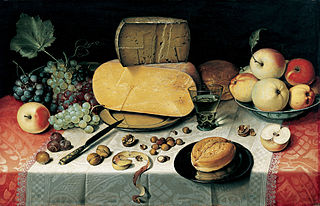 W
WBrunch is a combination of breakfast and lunch, and regularly has some form of alcoholic drink served with it. It is usually served anytime before 3 o'clock in the afternoon. The word is a portmanteau of breakfast and lunch. Brunch originated in England in the late 19th century and became popular in the United States in the 1930s.
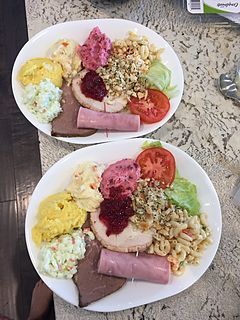 W
WA cold plate is a popular dish with origins in rural Newfoundland, Canada.
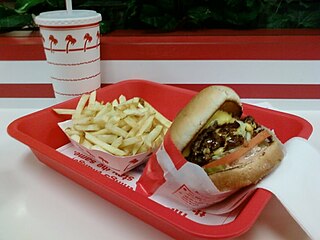 W
WA combination meal, often referred as a combo-meal, is a type of meal that typically includes food items and a beverage. They are a common menu item at fast food restaurants, and other restaurants also purvey them. Combination meals may be priced lower compared to ordering items separately, but this is not always the case. A combination meal is also a meal in which the consumer orders items à la carte to create their own meal combination.
 W
WDinner usually refers to what is in many Western cultures the largest and most formal meal of the day, which some Westerners eat in the evening. Historically the largest meal used to be eaten around midday, and called dinner. In Western cultures, especially among the elite, it gradually migrated later in the day over the 16th to 19th centuries. However, the word "dinner" can have different meanings depending on culture, and may mean a meal of any size eaten at any time of day. In particular, it is still sometimes used for a meal at noon or in the early afternoon on special occasions, such as a Christmas dinner. In hot climates, people have always tended to eat the main meal in the evening, after the temperature has fallen.
 W
WElevenses is a short break taken at around 11:00a.m. to consume a drink or snack. The names and details vary among countries.
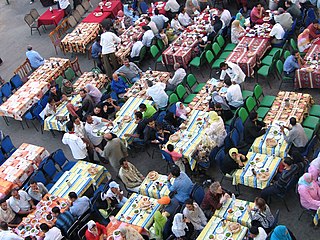 W
WIftar, also known as ftoor, is the evening meal with which Muslims end their daily Ramadan fast at sunset. They break their fast at the time of the call to prayer for the evening prayer. This is their second meal of the day; the daily fast during Ramadan begins immediately after the pre-dawn meal of suhur and continues during the daylight hours, ending with sunset with the evening meal of iftar.
 W
WKorean table d'hôte, called han-jeongsik in Korean, is a Korean-style full-course meal characterized by the array of small banchan plates in varied colours.
 W
WLeftovers are foods remaining unconsumed at the end of a meal which are eaten later. Inedible remains like bones are considered waste, not leftovers.
 W
WA meal kit is a subscription service–foodservice business model where a company sends customers pre-portioned and sometimes partially-prepared food ingredients and recipes to prepare homecooked meals. Services that send pre-cooked meals are called meal delivery services. This subscription model has been cited as an example of the personalization of the food and beverage industry that is becoming more popular and widespread.
 W
WMeal preparation, sometimes called meal prep, is the process of planning and preparing meals.
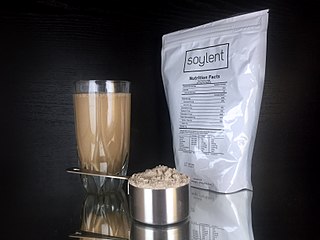 W
WA meal replacement is a drink, bar, soup, etc. intended as a substitute for a solid food meal, usually with controlled quantities of calories and nutrients. Some drinks are in the form of a health shake. Medically prescribed meal replacement drinks include the required vitamins and minerals. Bodybuilders sometimes use meal replacements, not formulated for weight loss, to save food preparation time when they are eating 5 to 6 meals a day.
 W
WMerienda is a light meal in southern Europe, particularly Spain, Portugal, Andorra (berenar) and Italy (merenda), as well as Hispanic America, the Philippines and Morocco and Brazil. Usually taken in the afternoon or for brunch, it fills in the meal gap between the noontime meal and the evening meal, being the equivalent of afternoon tea in the English-speaking world; or between breakfast and lunch. It is a simple meal that often consists of a piece of fruit, cookies, yogurt, and other snacks paired with juice, hot chocolate, coffee, spirits, or other beverages.
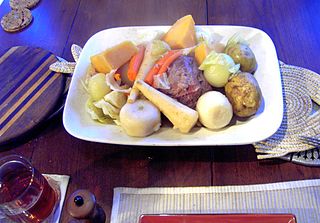 W
WNew England boiled dinner is the basis of a traditional New England meal, consisting of corned beef with cabbage and other vegetables often including potatoes, rutabagas, parsnips, carrots, turnips, and beets. The leftovers are traditionally diced and fried into red flannel hash for breakfast the next day. The dish resembles boiled beef from English cuisine, as well a similar Newfoundland dish called a "Jiggs dinner," named for a character in Bringing Up Father.
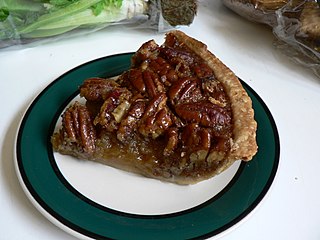 W
WThe official Oklahoma state meal is a state emblem of Oklahoma. While many U.S. states have one or more official foods, it is the only official state meal.
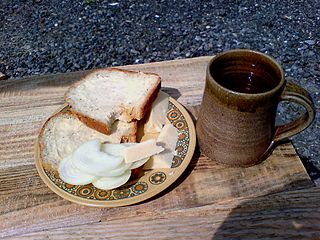 W
WA ploughman's lunch is an English cold meal based around bread, cheese, and onions, usually accompanied by butter and pickles. Additional items such as ham, green salad, hard boiled eggs, and apple can be added. As its name suggests, it is most commonly eaten at lunchtime, is particularly associated with pubs, and often accompanied with beer.
 W
WRijsttafel, a Dutch word that literally translates to "rice table", is an Indonesian elaborate meal adapted by the Dutch following the hidang presentation of nasi padang from the Padang region of West Sumatra. It consists of many side dishes served in small portions, accompanied by rice prepared in several different ways. Popular side dishes include egg rolls, sambals, satay, fish, fruit, vegetables, pickles, and nuts. In most areas where it is served, such as the Netherlands, and other areas of strong Dutch influence, it is known under its Dutch name.
 W
WSecond breakfast is a meal eaten after breakfast, but before lunch. It is a traditional meal in Bavaria, Poland, Slovakia, Spain and Hungary. In Bavaria and Poland, special dishes are made exclusively to be eaten during second breakfast. In Vienna and most other parts of Austria the second breakfast is referred to as Jause. In other Spanish-speaking countries, almuerzo means lunch, but in Spain it is a second breakfast. It is typical to eat four to five meals a day in these locations.
 W
WThe Slava is a Serbian Orthodox Christian tradition of the ritual glorification of one's family's patron saint. The family celebrates the Slava annually on the saint's feast day. In November 2014 it was inscribed in UNESCO Intangible Cultural Heritage Lists.
 W
WA snack is a small service of food and generally eaten between meals. Snacks come in a variety of forms including packaged snack foods and other processed foods, as well as items made from fresh ingredients at home.
 W
WThe soup and sandwich combination meal consists of a soup accompanied by a sandwich. It has been a popular meal in the United States since the 1920s. Some U.S. restaurant chains specialize in the meal, and it has been mass-produced as a prepared frozen meal.
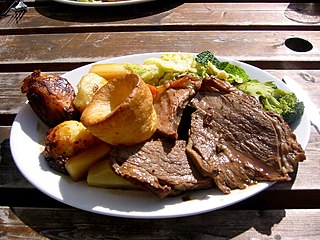 W
WThe Sunday Roast is a traditional British main meal that is typically served on Sunday, consisting of roasted meat, roast potatoes or mashed potatoes, and accompaniments such as Yorkshire pudding, stuffing, gravy and mint sauce. Vegetables such as cauliflower often in the form of cauliflower cheese, roast parsnips, Brussels sprouts, peas, carrots, runner beans, and broccoli, can be part of the dish. The Sunday roast is also popular in many parts of Ireland, especially in most of Ulster.
 W
WSupper was originally a secondary lighter evening meal. The main meal of the day, called dinner, used to be served closer to what is known as lunchtime, around the middle of the day, but crept later over the centuries, mostly over the course of the 19th century. When dinner was still at the early time, eating a lighter supper in the evening was very common; it was not always the last meal of the day, as there might be a tea later. Reflecting the typical custom of 17th century elites, Louis XIV dined at noon, with a supper at 10pm. Even when dinner was in the early evening, supper was served at, or on return from, a ball, and might be after other evening excursions. At an English ball in 1791, supper was served to 140 guests at 1:00am. They would all have had dinner at home many hours earlier, before coming out. Other, grander, balls served supper even later, up to 3:30 am., at a London ball given in 1811 by the Duchess of Bedford.
 W
WTea has long been used as an umbrella term for several different meals. Isabella Beeton, whose books on home economics were widely read in the 19th century, describes afternoon teas of various kinds, and provides menus for the "old-fashioned tea", the "at-home tea", the "family tea", and the high tea. Teatime is the time at which the tea meal is usually eaten, which is late afternoon to early evening, being the equivalent of merienda. Tea as a meal is associated with Great Britain, Ireland, and some Commonwealth countries. Some people in Britain refer to their main evening meal as "tea" rather than dinner or supper. This article is instead concerned with the various types of secondary, lighter, meals called "tea".